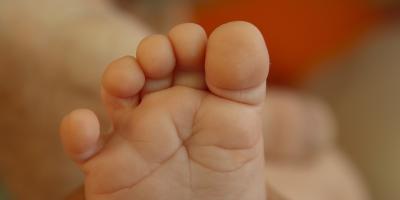Twist, sprain, fracture – treatment procedures for various limb injuries are similar. Most important is to immobilise the injured arm or leg.
The type of injury can only be diagnosed at a hospital.
Twist
This is an injury of the periarticular structures (ligaments, synovial capsule, etc.), which usually occurs during various falls.
The symptoms include pain, bruising, joint swelling causing deformation.
Twists are usually accompanied by loss of joint mobility, but it is possible to move the limb, e.g. you can walk with a twisted leg.
Sprain
A sprain is a much more serious injury. It is the dislocation of adjoining joint surfaces, which may be accompanied by a damage to the synovial capsule. A sprain can also cause dislocation of the bone in the damaged joint.
The symptoms are similar to those of a twist; however, a sprain makes it much more difficult to move the limb.
Both twists and sprains can be accompanied by subcutaneous haemorrhaging which cause further damage to the joints.
Fracture
A fracture is the rupture of the bone tissue with a possible dislocation of the bones in relation to each other. Fractures are divided into closed, when the skin near the damaged bone in unharmed, and open which damage the skin and the bone is usually visible.
Symptoms: pain, swelling, and limb deformation (e.g. unnatural curve), the patient is unable to move the broken limb.
Both closed and open fractures may cause haemorrhaging due to the tear of large blood vessels. They can also be accompanied by the so-called fat embolism (when the marrow escapes the bone and reaches the circulatory system) which can even entail a risk of death.
“The fractures of long bones (thigh, lower leg, arm, forearm) should be immediately treated by an ambulance team, because they can be accompanied by substantial haemorrhaging. There are situations when a patient with e.g. both broken thighs dies not of the fractures, but due to the haemorrhaging," a paramedic warns.
At times, the bone just cracks. The limb is not deformed and there is no dislocation. Still, the type of injury can only be determined by an X-ray scan.
The damaged limb should not be forcefully moved, since the sharp ends of the bone can damage the surrounding vessels and nerves.
First aid
The treatment is similar for twists, sprains and fractures. The most important thing is to secure and immobilise the two nearest joints in the case of fractures and in the case of joint damage - the joint and the nearby bones.
With an open fracture, we first need to secure the wound with sterile dressing and stop the bleeding.
“If the bone protrudes through the wound, you should not push it back inside or adjust it. Under no condition should you try to set the bones – only a qualified doctor can do this!" stresses the paramedic and warns that incompetent attempts at setting the bone may even result in amputation.
Upper limbs can be immobilised by being secured to the torso. The arm should be bent at a right angle and secured with a triangular shawls or even a scarf which can serve as a sling. The arm should support itself on the shawl and be as close to the torso as possible. If the other arm is well, it can support the damaged one. This position will cause the least pain to the patient.
In cases of lower limb injuries, the patient should be set on a flat and even surface. The easiest way to immobilise the leg is to tie it to the healthy leg with a bandage or scarf.









Comments (0)